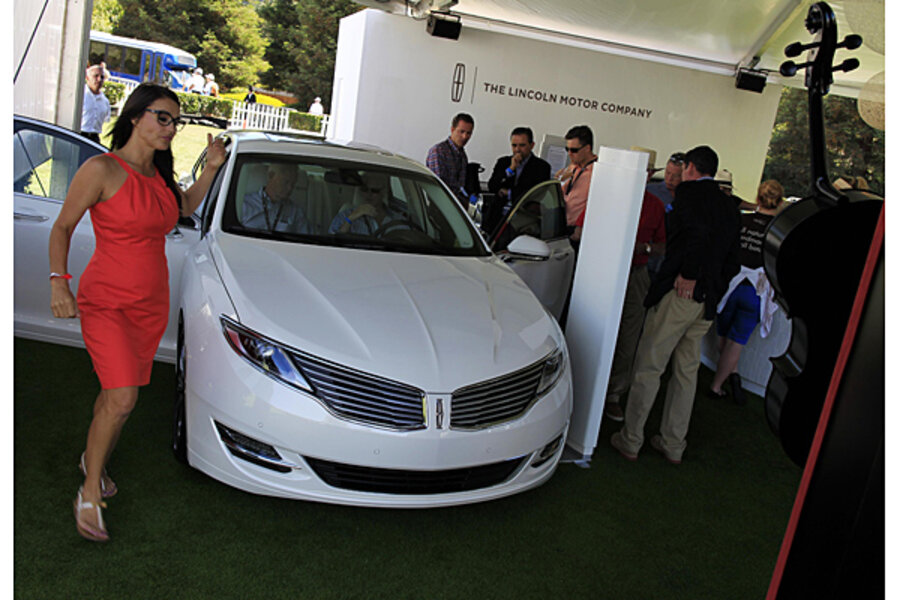Lincoln rebranding campaign launched. Will it work?
Loading...
Old Spice, Wendy's, MySpace: rebranding campaigns are everywhere these days. Now, Ford is trying its hand at the "re-invigoration" game with a new series of videos that aim to dust off the Lincoln name.
It's called the Lincoln Reimagine Project, and it's an element of Lincoln's larger "Hello, Again" rebranding campaign. The Reimagine Project centers around three shorts that re-envision classic Hollywood film types: the 70s road heist, the screwball comedy, and the noir thriller.
To direct those three vids, Lincoln has recruited four indie directors (two work as a team) and matched them with filmmaking mentor Rodrigo Garcia, who has helmed episodes of The Sopranos, Six Feet Under, and Big Love, among other properties. Vanity Fair is a co-sponsor of the project.
What's the link between classic films and Lincoln? According to the company's Andrew Frick, "Lincoln continues to embrace its original spirit of forward-thinking design and innovation. The creativity and individuality of these filmmakers inspire them to transform iconic film genres from the past into new and vibrant visions of the future – an accomplishment that mirrors what Lincoln intends to do with its vehicles over the next four years."
The films debuted today on Hello-Again.com, the centerpiece of the "Hello, Again" campaign.
OUR TAKE
The good news is that all of the clips look great. They capture the essence of the three film styles they reference, while simultaneously offering fresh perspectives. That's no small accomplishment.
The bad news is that this seems like an awfully roundabout way to reinvigorate Lincoln's image -- even if it's just one element of a larger rebranding campaign. Who's the audience for the Reimagine Project? Is that audience going to sit through online videos up to 11 minutes long -- especially when the audience knows that the clips are, in some sense, ads?
Not that Lincoln asked us for advice, but the brand clearly has an image problem. Once, Lincoln was the epitome of elegance and style; now, Lincoln vehicles seem old, slightly clunky, and somewhat awkward.
That's not to say that quirky design can't generate fans (cf. the Kia Soul, the Nissan Cube, the entire Scion lineup). But Lincoln needs to do more work owning its aesthetic and convincing consumers of its inherent awesomeness. Seriously, if Buick can reinvent itself, surely Lincoln has a shot.
If we were in Lincoln's shoes, we'd focus on the cars themselves -- not just reworking them, but persuading customers that they're already fantastic. We'd spend a little less time on oblique rebranding efforts that have limited potential online and even less potential offline.
And when we finally launched our rebranding campaigns, we'd probably do so on a date that wasn't a day of national remembrance, or one full of headlines about other automakers' snazzy new rides.







